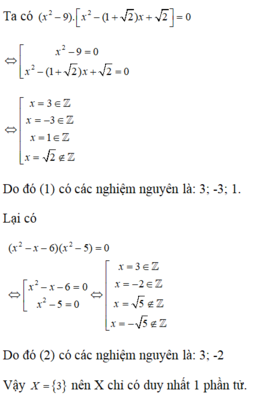1. Cho tập X = {x ϵ Z/ (x2 - 9).[x2 - (1 + \(\sqrt{2}\))x + \(\sqrt{2}\)] = 0}. Hỏi tập X có bao nhiêu phần tử?
2. Tập A = {0;2;4;6} có bao nhiêu tập hợp con có đúng hai phần tử?
3. Trong số 45 học sinh của lớp 10A có 15 bạn được xếp loại học lực giỏi, 20 bạn được xếp loại hạnh kiểm tốt, trong đó có 10 bạn vừa được học sinh giỏi vừa được hạnh kiểm tốt. Khi đó lớp 10A có bao nhiêu bạn được khen thưởng, biết rằng muốn được khen thưởng bạn đó phải có học lực giỏi hay hạnh kiểm tốt
4. Tìm tập xác định D của các hàm số:
a) y = \(\frac{\sqrt{2-x}+\sqrt{x+2}}{x}\)
b) y = \(\frac{2x-1}{\sqrt{x\left|x-4\right|}}\)
c) y = \(\frac{\sqrt[3]{x-1}}{x^2+x+1}\)
5. Tìm tất cả các giá trị thực của tham số m để hàm số y = \(\frac{2x+1}{\sqrt{x^2-6x+m-2}}\) xác định trên R

